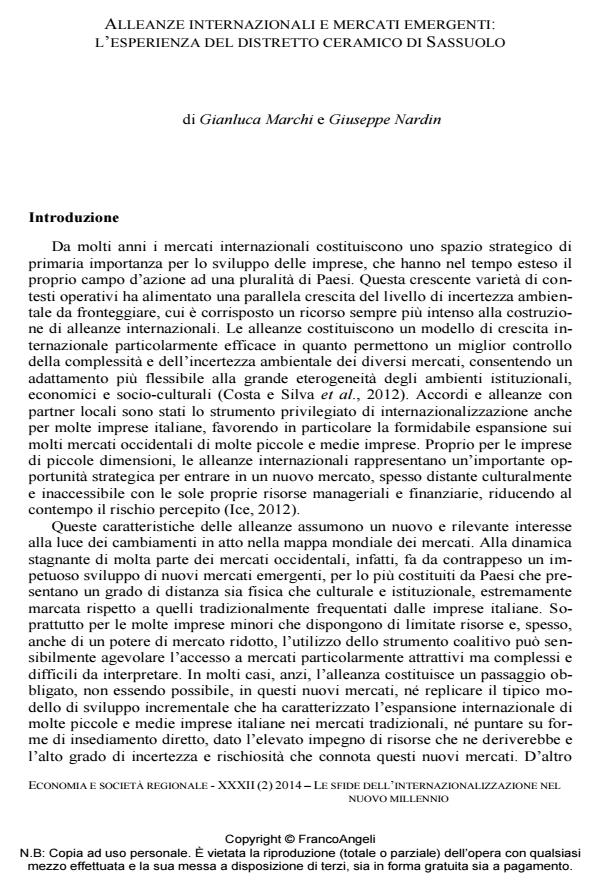Alleanze internazionali e mercati emergenti: l’esperienza del distretto ceramico di Sassuolo
Journal title ECONOMIA E SOCIETÀ REGIONALE
Author/s Gianluca Marchi, Giuseppe Nardin
Publishing Year 2014 Issue 2014/2
Language Italian Pages 11 P. 44-54 File size 225 KB
DOI 10.3280/ES2014-002004
DOI is like a bar code for intellectual property: to have more infomation
click here
Below, you can see the article first page
If you want to buy this article in PDF format, you can do it, following the instructions to buy download credits

FrancoAngeli is member of Publishers International Linking Association, Inc (PILA), a not-for-profit association which run the CrossRef service enabling links to and from online scholarly content.
Gianluca Marchi, Giuseppe Nardin, Alleanze internazionali e mercati emergenti: l’esperienza del distretto ceramico di Sassuolo in "ECONOMIA E SOCIETÀ REGIONALE " 2/2014, pp 44-54, DOI: 10.3280/ES2014-002004